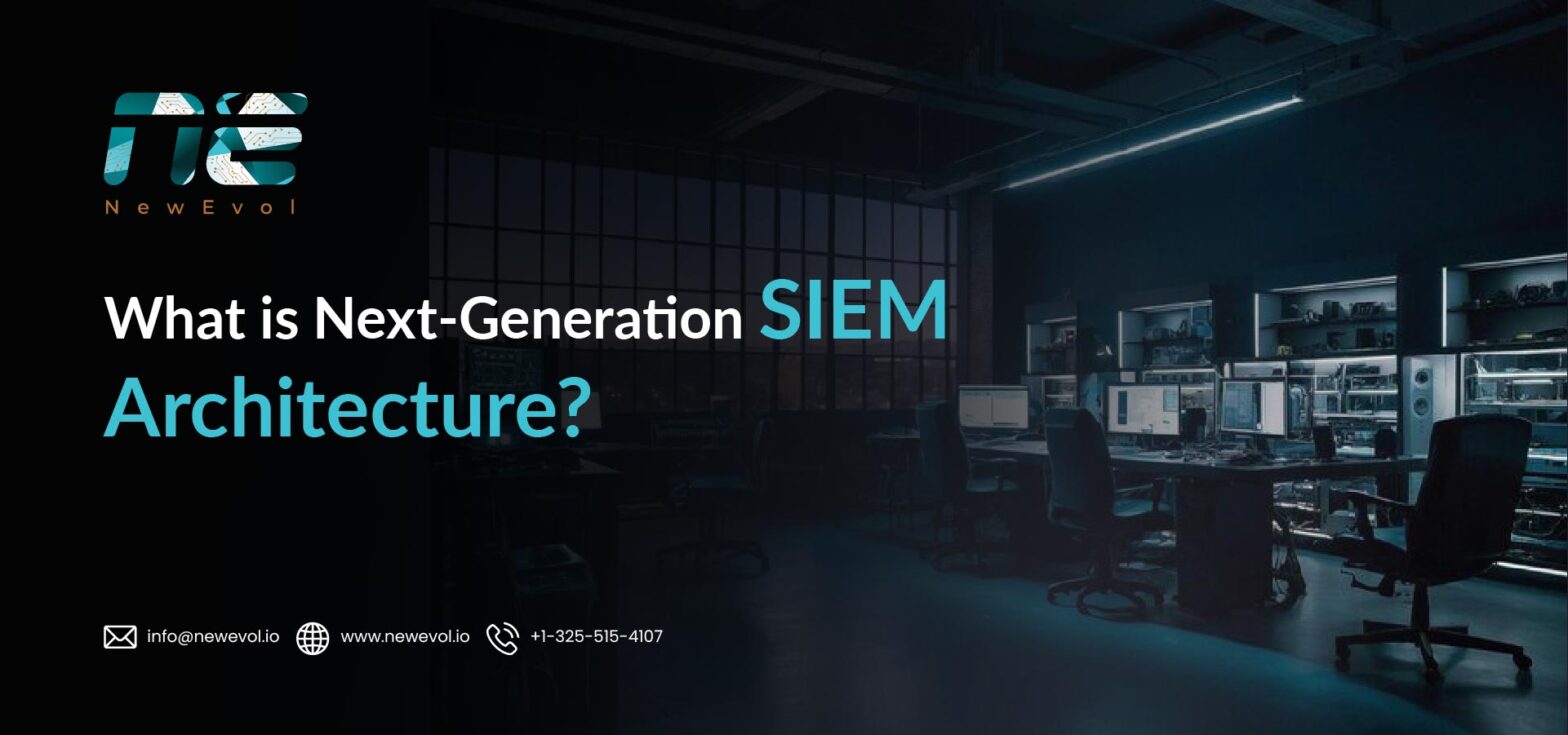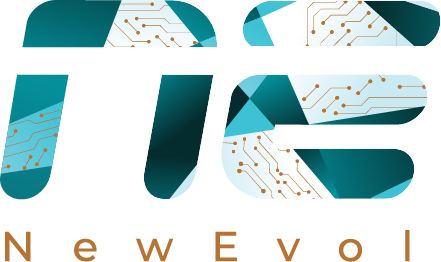What is Next-Generation SIEM Architecture?

Security Information and Event Management (SIEM) has long been the central nervous system of enterprise cybersecurity. It collects, correlates, and analyzes data from countless endpoints and systems to detect anomalies, flag threats, and support compliance. But the traditional SIEM—built for an era of static infrastructures and predictable threats—can no longer keep up with the dynamic, hybrid, and AI-powered threat landscape facing modern enterprises.
This shift has given rise to a Next-Generation SIEM Architecture — a reimagined framework designed to deliver intelligence, scalability, and automation at a level legacy systems simply can’t achieve.
The Evolution of SIEM: From Logs to Intelligence
The original purpose of SIEM was simple: gather logs, normalize them, and detect known attack patterns. While effective in structured, on-prem environments, these systems struggled as data volumes exploded and attack surfaces expanded across cloud, IoT, and remote work environments.
With data volumes up 26% yearly, legacy SIEM tools are buckling under hybrid-cloud telemetry—the shift to data lakes is now inevitable.
In the USA, where enterprises often manage petabytes of telemetry across multi-cloud ecosystems, traditional SIEMs became performance bottlenecks — expensive, slow, and reactive. Analysts spent more time managing rules than responding to real threats.
Next-generation SIEM architectures were built to address precisely this gap. They transition from being data collectors to intelligence enablers — not just identifying what happened, but predicting what could happen next.
Core Principles of Next-Gen SIEM Architecture
The next-generation SIEM isn’t a product; it’s an architecture built around five defining principles that reshape how security operations function:
1. Data Lake Foundation
Instead of storing limited log events in costly relational databases, modern SIEMs use scalable data lakes that can ingest structured and unstructured data in real time. This architecture allows for deeper visibility, faster queries, and seamless correlation across enterprise, cloud, and OT networks.
For American enterprises operating across hybrid environments, this means massive scalability and cost efficiency—ingesting terabytes of telemetry without losing performance or insight.
2. AI and ML-Driven Analytics
Machine learning models replace static correlation rules. By continuously learning from behavioral baselines, AI-driven SIEMs detect unknown-unknowns — threats that have never been seen before.
Instead of waiting for signature updates, the system autonomously adapts to emerging patterns. This transition turns SOC operations from reactive to proactive and predictive.
3. Automation and Orchestration
Integrated SOAR (Security Orchestration, Automation, and Response) capabilities enable SIEMs to not only detect but act—automatically isolating endpoints, blocking IPs, or triggering playbooks within seconds.
In the context of the USA’s large enterprise ecosystem—where talent shortages in cybersecurity remain a concern—this automation bridges skill gaps and accelerates response times.
4. Cloud-Native Architecture
Next-gen SIEMs are cloud-native by design, offering elasticity, resilience, and real-time scalability. Whether deployed in AWS, Azure, or Google Cloud, the system adapts dynamically to data volume surges and operational demands.
This design also ensures compliance with data residency and governance policies, critical for sectors like healthcare, BFSI, and government in the U.S.
5. Unified Visibility and Contextual Correlation
Modern attacks rarely occur in isolation. A phishing email might lead to credential theft, lateral movement, and exfiltration — all across different systems.
Next-gen SIEMs integrate endpoint, identity, cloud, and network telemetry to create context-aware detection. Analysts no longer see isolated alerts; they see the full story — cause, effect, and impact — in a single unified view.
Key Components of Next-Generation SIEM
A true next-gen SIEM architecture blends data science, automation, and security intelligence in a tightly orchestrated ecosystem. Let’s break down its critical building blocks:
- Ingestion and Normalization Layer – Collects data from across infrastructure (endpoints, firewalls, SaaS platforms, OT systems) and normalizes it for analysis.
- Data Lake and Storage Tier – Cloud-scale architecture for storing raw, enriched, and historical telemetry for deep threat analytics.
- Analytics Engine – The AI core that applies machine learning, UEBA (User and Entity Behavior Analytics), and anomaly detection models.
- Correlation and Enrichment Layer – Integrates threat intelligence feeds and contextual data (like asset criticality or user behavior).
- SOAR Integration Layer – Enables automated workflows, remediation playbooks, and cross-tool orchestration.
- Visualization and Reporting – Dynamic dashboards, hunt interfaces, and compliance reports tailored for SOC analysts and CISOs.
Together, these components create a living architecture — one that adapts, scales, and evolves continuously.
Why Enterprises in the USA Need Next-Gen SIEM
The American cybersecurity ecosystem is facing a convergence of challenges — skyrocketing attack sophistication, fragmented infrastructures, and growing compliance mandates (like CISA directives, HIPAA, and PCI-DSS).
Next-Gen SIEMs address these realities by offering:
- Operational agility: Cloud-native deployment enables fast scaling across multi-region enterprises.
- AI-assisted threat detection: Identifies novel threats faster than rule-based systems.
- Reduced analyst fatigue: Automation eliminates repetitive alert triage tasks.
- Compliance intelligence: Built-in reporting supports evolving U.S. regulatory frameworks.
- Integration flexibility: Seamlessly connects with EDR, NDR, IAM, and cloud security solutions for unified detection and response.
For enterprises operating at scale — especially in financial services, healthcare, energy, and federal sectors — adopting next-gen SIEM is not just modernization; it’s a strategic necessity.
Next-Gen SIEM vs. Traditional SIEM: The Architectural Shift
The SIEM market is on track to exceed $10 billion by 2030, fueled by AI integration and cloud-native architectures. This shift is not incremental — it’s architectural. Next-Gen SIEMs are built for continuous learning, zero-latency detection, and cross-domain intelligence.
|
Capability |
Traditional SIEM |
Next-Gen SIEM |
|
Data Handling |
Limited log ingestion, rule-based storage |
Cloud-scale data lake with dynamic ingestion |
|
Detection |
Signature and rule-driven |
AI/ML-driven behavioral analytics |
|
Response |
Manual or semi-automated |
Fully automated with SOAR playbooks |
|
Scalability |
On-prem, rigid |
Cloud-native, elastic |
|
Visibility |
Siloed views |
Unified, contextual correlation |
|
Maintenance |
Heavy human configuration |
Self-learning and adaptive > |
How NewEvol Redefines SIEM Architecture
NewEvol’s platform embodies the very essence of Next-Gen SIEM. It unifies AI analytics, SOAR automation, and data lake scalability into a single intelligent framework — engineered for predictive defense.
Here’s how it sets itself apart:
- Cognitive Correlation Engine – Analyzes behavioral patterns across billions of events, revealing complex attack chains that rule-based SIEMs miss.
- Unified Data Fabric – Ingests and correlates logs, network telemetry, and threat intelligence across multi-cloud and on-prem ecosystems.
- Agentic Automation – Responds autonomously through playbooks and adaptive workflows, drastically reducing mean time to respond (MTTR).
- Modular Integration – Connects seamlessly with existing EDR, SOAR, and cloud-native tools, eliminating vendor lock-in.
- Adaptive Learning – Continuously improves detection logic as threats evolve, making the SOC smarter with every incident.
NewEvol isn’t just another SIEM platform — it’s a next-generation SOC ecosystem built to transform how enterprises detect, defend, and decide.
The Future of SIEM: From Intelligence to Autonomy
The future of SIEM architecture is heading toward autonomous security operations. As generative AI, graph analytics, and agentic automation mature, the next generation of SIEM will no longer just interpret events — it will reason, prioritize, and act independently.
For U.S. enterprises navigating an increasingly complex digital landscape, the adoption of next-gen SIEM is not a trend — it’s a transformation. It enables SOCs to move from alert-driven firefighting to intelligence-driven resilience.
Conclusion
Next-Generation SIEM Architecture represents a decisive evolution — from reactive monitoring to cognitive defense. It’s about turning every log into foresight, every anomaly into insight, and every alert into action.
In an age where the cost of delay is measured in breaches, next-gen SIEM is the foundation for resilient, intelligent, and autonomous cybersecurity.
NewEvol stands at the forefront of this transformation — helping enterprises in the USA reimagine what’s possible when intelligence, automation, and architecture converge.
FAQs
1. What makes a SIEM “next-generation”?
AI-driven analytics, automation, and cloud-native scalability that go beyond rule-based detection.
2. How is it different from traditional SIEM?
It predicts and responds to threats in real time instead of just collecting and correlating logs.
3. Why is it critical for U.S. enterprises?
It helps handle massive hybrid-cloud data, meet compliance, and counter advanced cyber threats efficiently.
4. Does it replace SOAR?
No — it integrates with SOAR for automated, end-to-end incident response.
5. How does AI improve accuracy?
By learning behavioral patterns and detecting unknown threats while cutting false positives.
6. Can it scale across cloud and hybrid setups?
Yes. Cloud-native data lakes ensure elastic scalability and unified visibility.
7. Is deployment complex?
Not with platforms like NewEvol — designed for seamless, modular integration.
8. How does it support compliance?
It automates monitoring, correlation, and reporting for frameworks like HIPAA, PCI-DSS, and CISA.
9. Is it suitable for smaller enterprises?
Yes — cloud-based SIEMs scale flexibly without requiring large SOC teams.
10. How does NewEvol stand out?
It fuses AI, automation, and cognitive analytics into one adaptive security ecosystem.

